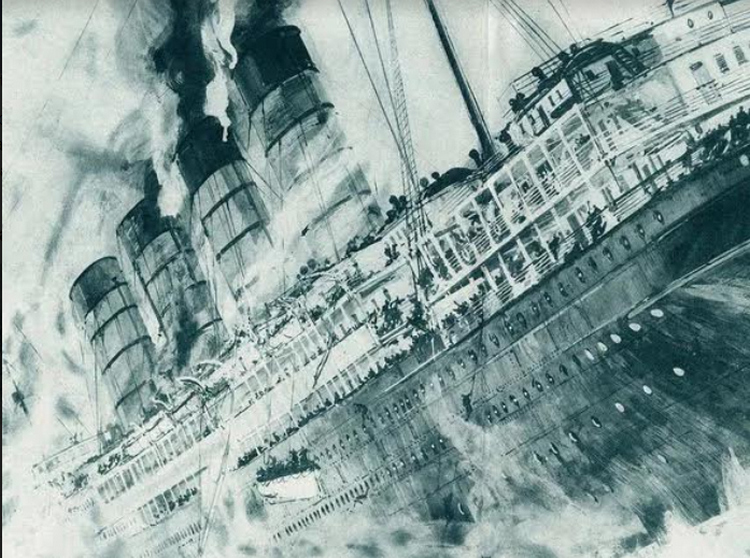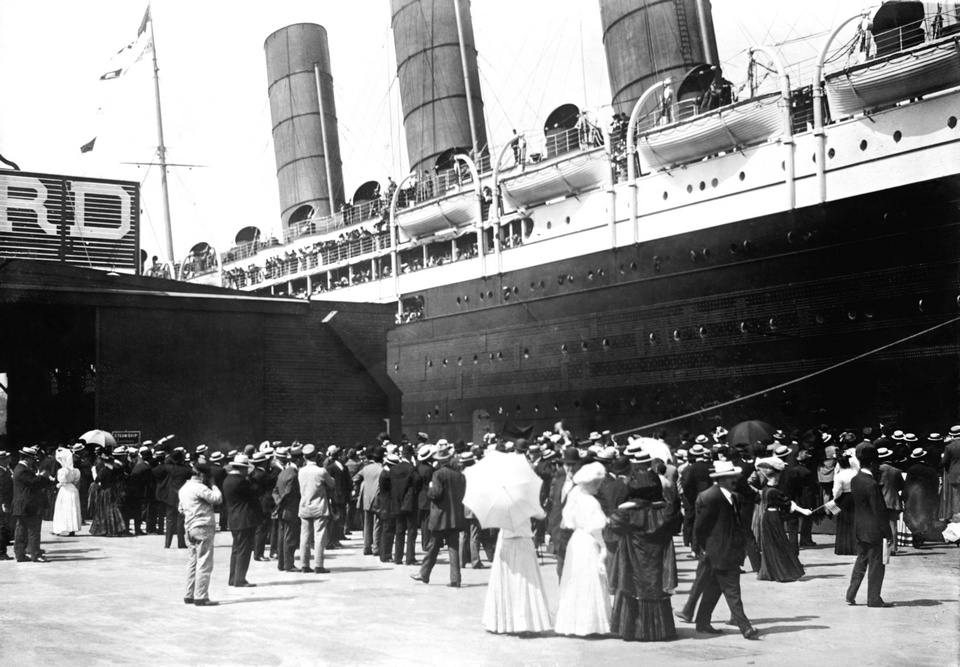

The fastest passenger ship in the world was sunk by a German U-boat in May 1915 with the loss of 1,200 mostly British lives. In spite of literally hundreds of dives to the wreck of the Lusitania, which lies in 300 feet of water several miles off the southern Irish coast, several mysteries have never been solved.
There is no doubt the Lusitania was carrying small arms and ammunition, as machine gun ammunition and shrapnel artillery shells are listed in her manifest. Moreover, evidence of them is scattered all over the sea floor. The bigger question is whether she was carrying much larger explosives and weapons as maintained by the Germans at the time. Although the Lusitania was struck by only one torpedo, she sank in 20 minutes. A second huge explosion was heard just after the torpedo struck which might have been the engine room exploding as its steam cables were severed. Or it might have been illegal heavy munitions exploding.

During the early 1940s, the Royal Navy dropped many hedgehog mortars on the wreck, with one or two unexploded ones actually recovered. One view is that British ships mistook the wreck for a lurking Nazi submarine and, to be fair, there were many of those in Irish waters during the Second World War. Alternatively, the British were trying to destroy as much of the wreck of the Lusitania as possible in order to prevent divers from discovering too much. Many underwater explorers take the view that the attempted destruction was deliberate.
A further mystery is why the U-boat in 1915 managed to score a direct hit on the fastest ship afloat. Although Captain Turner of the Lusitania, who survived, refused to answer operational questions at the subsequent court of inquiry, many surviving passengers and crew testified that the ship deliberately slowed down as she approached the Old Head of Kinsale on the Irish coast. That was unusual.
Some say this was because she needed to turn, but others point out that she did not zig-zag (a common maneuver to avoid submarines in wartime) nor was an escort ship sent out to meet her. Some writers claim that navy head Winston Churchill actually wanted the Lusitania to be sunk in order to bring America into the war. 128 Americans died in the disaster, including American playboy Alfred Vanderbilt. But it was to be a further two years before the United States did come in. In spite of several unsuccessful attempts to reopen parts of the official inquiry in Britain, silence has reigned in official circles ever since.
Controversies are common in major sea tragedies and the Titanic, three years previously, has its own stack of ifs and buts. But there is an unusual link between the two liners. Stoker George Beauchamp was below decks working when the Titanic struck the iceberg, but survived in one of the last lifeboats to leave the stricken liner. He was also on board the Lusitania during her last fateful voyage and was rescued in the water by fishermen from the Irish mainland. After two disasters, he told his family, “I have had enough of big boats to last a lifetime.” He died in 1944, aged 72.
 |
 |
 |





